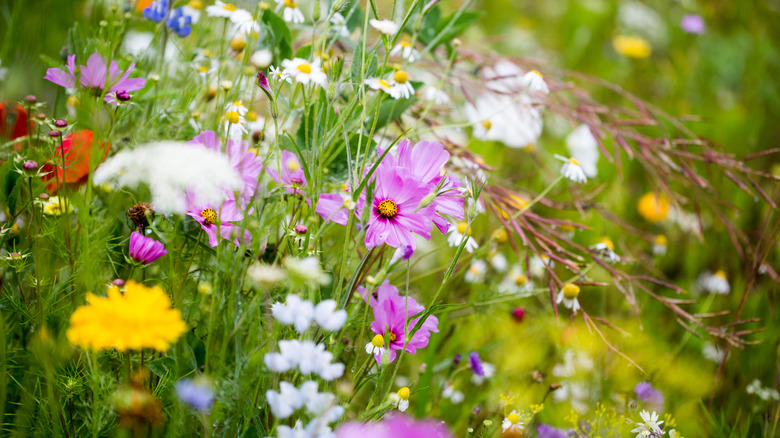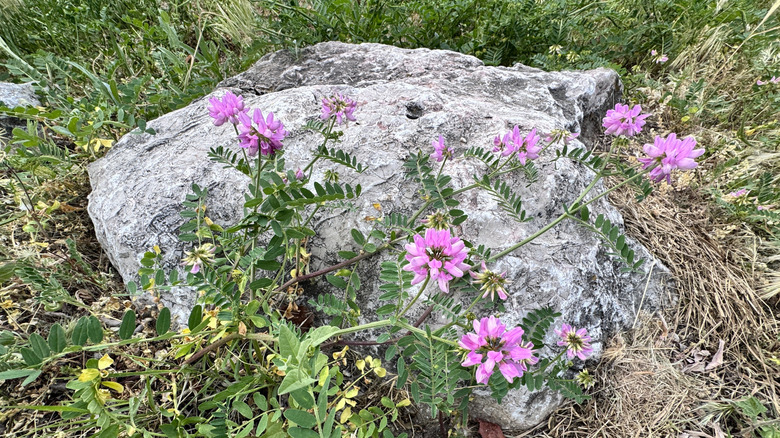If This Pink Perennial Shows Up In Your Yard, Yank It—it's An Invasive Weed
If a pink-flowered perennial suddenly carpets your yard, chances are that it's one of several pink lawn weeds you should pull immediately. This creeping legume may look delicate, with clusters of pea-like pink and white blooms, but it's far from friendly. Introduced from Europe, Asia, and Africa for erosion control in the 20th century, crown vetch (Securigera varia) is now invasive in many U.S. states and nearly impossible to remove once it's established.
Learning how to identify these invasive weeds ensures you won't be fooled by the pretty flowers. The plant grows in dense mats, reaching up to 3 feet tall, and spreads aggressively through both rhizomes and seeds. Each root network can extend as far as 10 feet, allowing it to smother surrounding plants and prevent other species from gaining a foothold. With fine-textured leaves divided into up to 25 leaflets and clusters of up to 25 flowers per stem, it can easily disguise itself as a harmless wildflower. But under the surface, its rapid spread threatens your garden's balance.
To make matters more complicated, crown vetch tolerates nearly any soil type, thrives in both sun and partial shade, and needs essentially no fertilizer to grow. It's drought-tolerant and has no significant diseases or pests, making it perfectly equipped to dominate wherever it lands. While this toughness once made it useful for stabilizing slopes and roadsides, it now means extra work for gardeners trying to maintain healthy, diverse landscapes.
Why crown vetch is more harmful than helpful
Crown vetch is more than a garden nuisance; it can create long-term ecological damage. These beautiful flowering plants are considered invasive species because the sprawling stems form thickets that block sunlight, shading out wildflowers, grasses, and small shrubs. Over time, it builds monocultures, drastically reducing plant diversity and degrading wildlife habitat. Seeds can remain viable in the soil for up to 15 years, making infestations particularly difficult to eliminate once they begin.
The plant doesn't just smother. By fixing nitrogen into the soil, crown vetch can also alter nutrient levels in ecosystems that rely on low-nitrogen conditions, changing the balance for native plants adapted to leaner soils. Left unchecked, it climbs over shrubs and young trees, forming walls of vegetation that transform prairies, dunes, and roadsides into monocultures. This makes crown vetch a recognized invasive species in numerous states and conservation lists across the United States.
Managing crown vetch takes some persistence. Small patches can be pulled by hand, but all of the plant's roots must be removed to prevent it from resprouting. Larger infestations may require repeated mowing combined with targeted herbicide treatments such as glyphosate or triclopyr. These should be applied at the correct label rates and followed by ongoing monitoring. For gardeners looking to replace it with a similar plant, wood vetch (Vicia caroliniana) is a noninvasive native option. Staying vigilant and removing crown vetch early is the best way to protect your garden and any surrounding natural areas.

